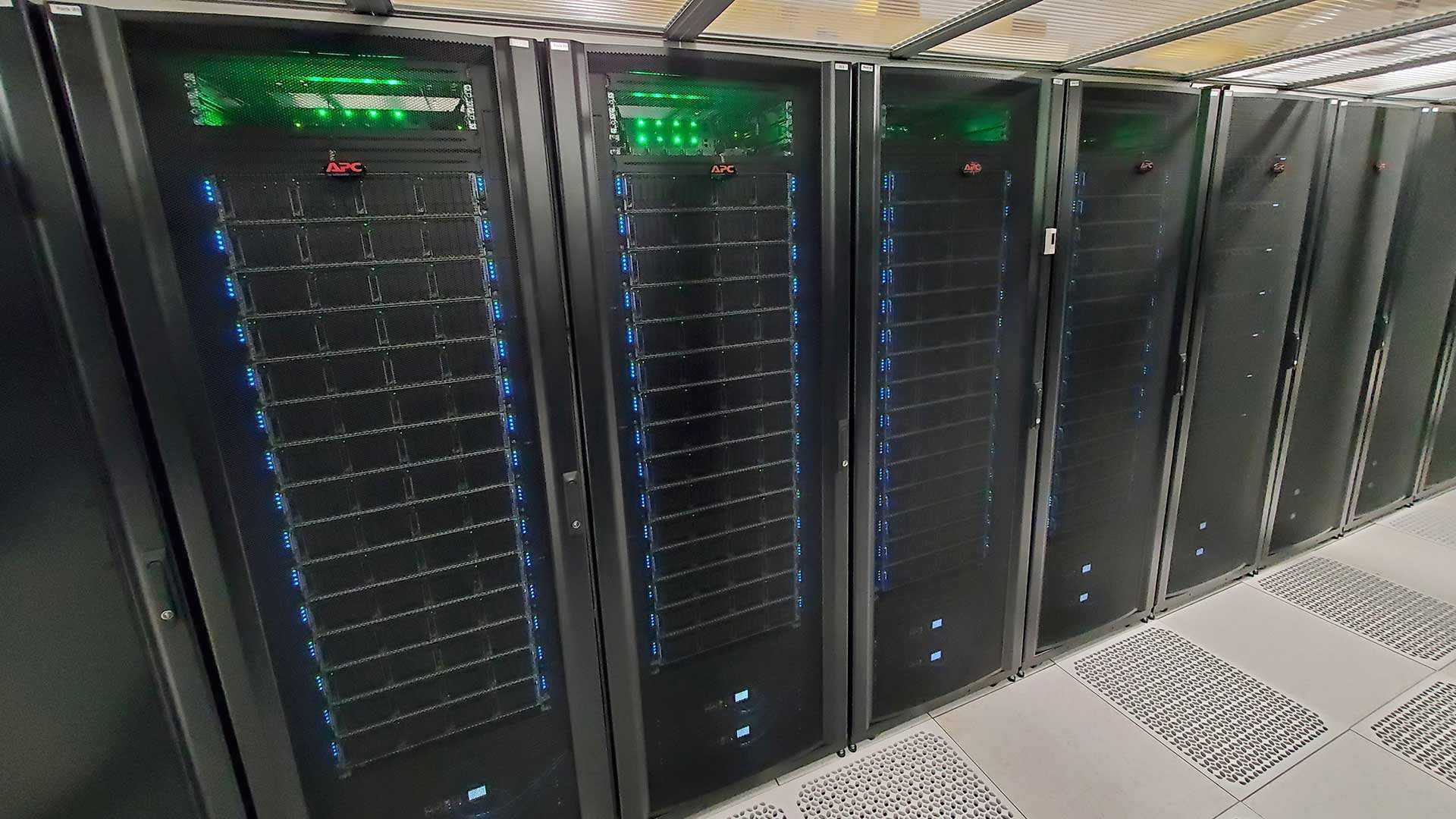- November 30, 2022
- By Chris Carroll
When your brain can’t quite handle the math, there’s always your computer to help. For University of Maryland researchers from every school and college whose personal computers have also reached their limits, now there’s Zaratan.
Named for a massive, mythical turtle with roots in medieval Arabic literature, UMD’s new high-performance computer (commonly called a “supercomputer”) can easily crunch through complex computations of the sort that are increasingly central to studies in astronomy, physics, atmospheric science, chemistry and many other disciplines.
University leaders will introduce the new computer in a grand opening celebration tomorrow at the Adele H. Stamp Student Union, while saying farewell to the university’s previous supercomputer, Deepthought2, which supported the publication of some 600 scientific papers.
“To put it simply, it’s a critical tool for science,” said Jeff Hollingsworth, UMD’s vice president of information technology and chief information officer. “In order to solve the grand challenges our researchers are working on—questions about climate and weather, next-generation batteries and clean energy technology, drug discovery—you need high-performance computing because all of those present substantial compute problems.”
In its final years, Deepthought2 performed important calculations for the recent NASA DART (Double Asteroid Redirection Test) mission that involved many Maryland scientists, including astronomy Professor Derek Richardson, a DART investigation team lead as well as one of UMD's most prolific high-performance computer users.
"Zaratan is a tremendous resource for the university and certainly for the astronomy department," he said. The new computer will handle everything Deepthought2 did, including studies of black holes, the dynamics of solar system collisions and planetary explorations, but even faster.
What makes Zaratan more super than its predecessors? Read on.
Bigger and Better
Compared to Deepthought2, Zaratan has roughly 10 times the overall performance and 10 times the storage, said Kevin Hildebrand, Division of Information Technology technical lead for the Zaratan project. It boasts nearly 50,000 compute cores (the CPU in your laptop might have four or eight cores), 2,000 terabytes of fast parallel storage and 10,000 terabytes of standard storage—thousands of times more than a standard laptop or desktop and approximately enough to hold the text of all the books ever written 10 times over.
Well-connected
A high-performance computer is essentially hundreds of smaller computers (each far more powerful than anything you could pick up at Best Buy) working together as one. All that electronic teamwork requires plenty of cable to hook everything together—2¼ miles of it, in the case of Zaratan.
Keeping Its Cool
Like many supercomputers, Deepthought2 was air-cooled, meaning a variety of fans were needed to drag cool air across vital components to keep it running. Zaratan’s higher performance generates more heat, so it uses liquid cooling, with chilled fluid carrying heat away from the cores through tubes and pipes. Not only is it far more effective, it also eliminates the need for ice-cold air conditioning in the room in where Zaratan is kept, reducing overall power needs.
Powerhouse
Zaratan still can suck up enormous amounts of electricity. At full bore, it’s been measured drawing about 350 kilowatts of power—as much as 100 typical homes would use. Its standard power consumption is about 300 kilowatts, and since it came online in August, UMD researchers have had it solving problems more or less around the clock.
Big Numbers
The number of calculations is numbered in the quadrillions (or 10 to the 15th power), with 1 quadrillion calculations per second referred to as a petaflop. Typically, Zaratan operates at just under 2 petaflops (which places it among the top 20 academic supercomputers in the United States), but its theoretical performance limit is 3.5 petaflops. To imagine what that means, said Franz Klein, UMD high-performance computing specialist: “If every person on the planet is doing one calculation per second for five days, then they would have done as many calculations as Zaratan is doing per second.”
Learn how high-performance computing supports UMD research while enjoying food, giveaways and raffles at the Zaratan supercomputer grand opening celebration, scheduled from 1-3 p.m. tomorrow in the Atrium of the Stamp Student Union.
